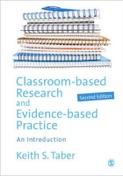Educational Research Methods

A site to support teaching and learning...

Degree of Structure in Observations
“Another key dimension of classroom observation concerns the type of data collected. This can vary from free-form notes, where anything that might prove to be of interested is noted, to the use of a formal observation schedule with clearly defined categories (where the observer’s job may be to keep a tally of events identified as being in these categories)
...the type of data collected depends upon the purposes of the research. A research question of the form ‘what is it about 8F that leads to all their teachers judging them a ‘pleasure’ to teach?’ needs a different approach to data collection than the question ‘do the boys in 8F shout out answers to the teachers’ questions significantly more often than the girls?’” (Taber, 2013: 271.)
The question of how much structure (or conversely flexibility) to impose on observations relates to the paradigmatic underpinnings of the research, and in particular whether it is confirmatory research, testing out specific ideas, or discovery research with a more exploratory purpose.
Similar issues are faced in deciding how much structure should be built into an interview schedule.
This is a personal site of Keith S. Taber to support teaching of educational research methods.
(Dr Keith Taber is Professor of Science Education at the University of Cambridge.)
2015
Taber, K. S. (2013). Classroom-based Research and Evidence-based Practice: An introduction (2nd ed.). London: Sage.
